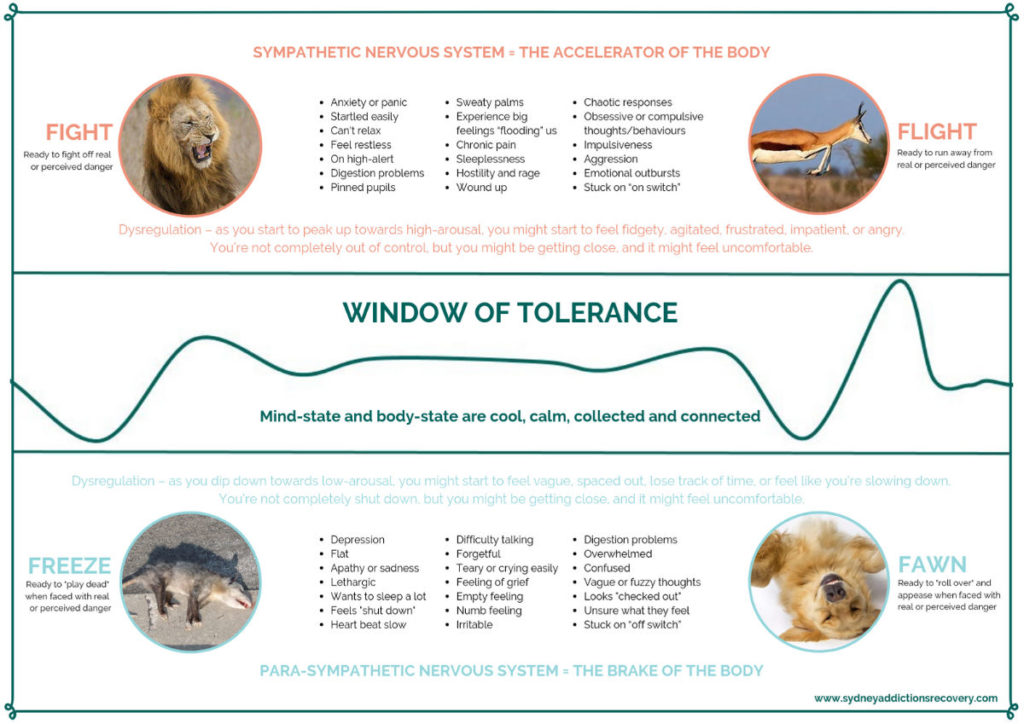I talk to clients all the time about the fight, flight, freeze response. People who come to see me are almost always dealing with symptoms related to anxiety. What that looks like in their lives is that their brain won’t shut off, there can be 10 things going on in their mind at once, and they overthink things, which means that small things often become big things. They often have difficulty sleeping and focusing and react to daily stresses more emotionally than they would like, or, they shut down in the face of stressful events. Physically, they tell me they feel tight in their body and they may have heart palpitations and/or feel like they have butterflies in their stomach much of the time.
These are all signs of the nervous system being out of balance or “stuck” in the fight, flight, freeze or fawn response. Here’s an excellent graphic showing what happens when our system is stuck in one of these responses.

When our system is stuck, we literally don’t have the capacity to get to that “window of tolerance” shown in the centre of the graphic. That’s because the limbic system, which all about alerting us to danger, high emotions and fight or flight, is running the show and the front of the brain, the cerebral cortex, which is the reasoning, problem-solving part of the brain has gone off-line.
As the next graphic shows, our system goes into “survival mode”, so it’s no wonder that we can’t calm ourselves down!

The goal then becomes to calm the nervous system down so that our frontal cortex can come back on-line and our window of tolerance, the zone where we can think rationally, make decisions from a calm place and not feel overwhelmed or withdrawn, can expand.
One way of calming the nervous system is through NeurOptimal®. What it does is interrupt the flight, flight, freeze response at an electrical level, not at a thinking level, hundreds of times during a session, and over time the nervous system gets “unstuck”. The result is that the frequency, intensity and/or duration of some or all of the symptoms that clients have been experiencing come down.
That’s when the magic happens! The “window of tolerance” gets bigger and problem-solving the daily stresses that come our way gets much easier.
Once that window of tolerance has opened again, how do we keep it open and expanding even more? Come back to our blog soon for the answer!
